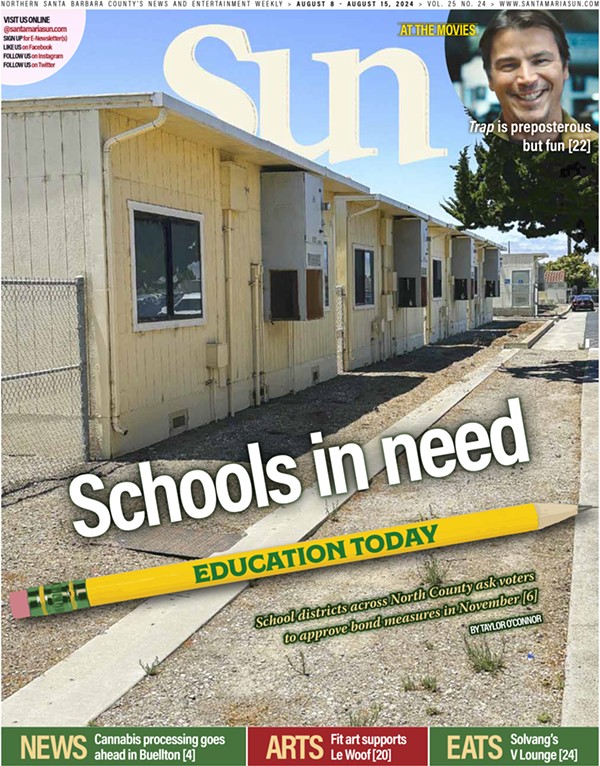Like all local governments in the state, Lompoc has been in the process of completing an eight-year update of the General Plan Housing Element; but this time it’s different.
As the consulting firm made its presentation to the City Council on Nov. 21, its representatives informed the council that “the state’s big push, because of the housing crisis, is to get discretion out of the process as much as possible.” And “if you don’t adopt the current changes to the Housing Element, the state can and will withhold grant funding for low-income projects.”
The Community Development director said that, for example, Lompoc would not be eligible for other grant funding such as park improvements unless the city has a compliant Housing Element. This means either do what the state says, or it will cut off funding for much-needed projects.
Part of the update was a requirement to identify any feasible location for added housing. More than 60 parcels were chosen without the knowledge or approval of the property owners. This was to prove that the city had the capacity to meet the Regional Housing Needs Allocation (RHNA) numbers.
Converting underutilized parking lots into mixed use projects makes sense in some cases, but not others. The conversion of one parking lot was an issue to the two planning commissioners present—one lot identified as “feasible” in the Old Town area was next to the Lompoc Theater. This project had recently received a multi-million-dollar grant, and now its parking lot was being considered as a potential housing site. Another issue was, “If high-density housing were to be built [on existing parking lots], where would the people in these projects park?”
Councilman Dirk Starbuck asked, “If [the Housing Element were] adopted, would all the feasible sites become entitled to remove or modify existing structures and increase density?” The planning manager responded, “If someone comes in with six or less units, they can go to the building counter and request a permit. If it would otherwise require a conditional use permit or development plan, then the Planning Commission would be able to review the project. So, they would be able to submit a project for review but not be ‘entitled’ to build it unless the project met the zoning ordinance standards.”
Planning Commissioner Steve Bridge asked what happens if someone doesn’t build on a site designated as feasible for high density development. The city attorney responded that “if someone doesn’t build on the site for two consecutive cycles of the Housing Element [16 years] then it becomes ‘by right’ as long as the developer includes 20 percent low-income units.”
The consultant then said that only 28 out of 482 cities in the entire state had ever met their RHNA allocation, but the state doesn’t “punish” a city because they don’t build the entire allocation. Concerning jobs/housing balance, Councilman Starbuck observed that if we keep rezoning commercial properties or increasing density to allow low-income projects “where will these people work?”
Councilman Starbuck then observed, “It sounds like the RHNA numbers are just a paperwork drill”; the planning manager agreed.
Councilman Jeremy Ball asked, “Are we considering the job/housing needs of Vandenberg SFB?” The consultant reminded the council that the Department of Defense provided a grant of more than $1.3 million to conduct a “compatible use and resiliency” study to examine land uses and critical infrastructure to see how they are impacting today’s and tomorrow’s mission at Vandenberg Space Force Base (VSFB), and the result was concerning.
First, he said there is a “great shortage of workforce housing; you have more than your fair share of low-income housing. What’s needed is to create opportunities for more workforce housing. What we are hearing from VSFB officials is that military members and civilian employees can refuse to come to VSFB if they want to.”
He also said that contract workers and military members want comfortable living spaces that have no yardwork associated with them. That’s why more quality middle- and upper middle-income housing is needed.
Commercial launch companies are the dominant mission at Vandenberg today; they currently bring transient teams in for launches. However, they are looking to build a satellite assembly plant and station a more permanent workforce here to support future missions. The government Space Force mission is going to continue for decades and may also grow in the future, but local cities must provide adequate housing for those new workers.
Recently media reports said that SpaceX announced that “we’re really ramping up Vandenberg to rates that we’ve never seen before, and the area hasn’t seen before. Next year, we’ll be launching about once a week, but the plan, in about two years, is about every three to four days,” (Noozhawk, “SpaceX Yearly Launch Rate at Vandenberg SFB Could Soar to 100 by 2025,” Dec. 4).
SpaceX currently has 300 employees and has about 50 positions for all types of jobs open now. But that number could grow to about 500 by next year and 700-plus the following year.
It looks like there is an opportunity for developers to build market-rate housing to accommodate the increase of SpaceX and other commercial launchers’ permanent workforces.
So, at the end of this discussion it sounded more like this entire process was just an exercise to demonstrate that state-level politicians “cared about housing” and that if history was any indicator, not much of it would ever be built.
Finally, the council, after a multi-hour discussion, approved a motion with a 4-1 vote to accept the recommended changes; Councilman Starbuck dissented.
Mayor Jenelle Osborne summed it up best it best when she observed that there would be many more changes in the future as Sacramento tries to micromanage local housing needs.
Ron Fink writes to the Sun from Lompoc. Send a letter for publication to [email protected].








